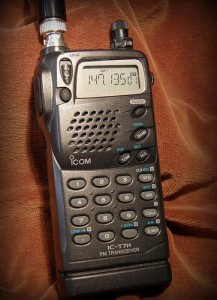Staying In Touch When You’re Off the Grid
Mar 8th, 2010 | By Editor | Category: Featured Articles, Misc | Print This Article
 When it comes to preparing for disasters, whether a short-term situation such as a weather related event, or long-term such as an economic collapse, communications is a vital part of survival preparedness. One should carefully consider how they will communicate with family, neighbors, allies, etc. as well as how they will receive information about the situation.
When it comes to preparing for disasters, whether a short-term situation such as a weather related event, or long-term such as an economic collapse, communications is a vital part of survival preparedness. One should carefully consider how they will communicate with family, neighbors, allies, etc. as well as how they will receive information about the situation.When selecting radio equipment, there are some key factors one must consider. Today we will briefly discuss band selection, power options, security, and size. Keep in mind that the best option is always the one that is tailor made to best fit a particular situation and set of circumstances. A careful evaluation of those factors will greatly aid in proper radio selection.
There are three main options for survival radio bands or frequency ranges. They are Ultra High Frequency (UHF), Very High Frequency (VHF), and High Frequency (HF). Each band has its upside and its downside. UHF has a very short radio wavelength that allows for a short antenna, but it also limits the range since it is adversely affected by obstacles. VHF offers greater range and is less affected by buildings and terrain features, but requires a longer antenna for optimum performance. This band is very popular in marine and aviation uses. HFhas the potential for around the world communications, but is the most technically challenging to use. A more thorough understanding of radio wave propagation and antenna theory is required to utilize HF radios to their highest potential.
Armed with a basic understanding of the different bands, one can begin to select radios for a particular situation. The ultimate setup would be a selection of different radios, though this may not always be practical. A good HF base station with a few handheld UHF radios would be great and will be more than sufficient in most situations.
Armed with a basic understanding of the different bands, one can begin to select radios for a particular situation. The ultimate setup would be a selection of different radios, though this may not always be practical. A good HF base station with a few handheld UHF radios would be great and will be more than sufficient in most situations.
Power source is critical when it comes to survival radios. When referring to power, we are referring both to how the radio is powered and to how that power source is recharged. Basic power options are battery power (DC) and residential (AC). Though many base station units operate using AC, in a survival situation we should stick to equipment that runs on batteries as AC will likely be unavailable other than in the form of generators.
There are two main options for batteries. Off the shelf batteries, such as AA are a good start. This will allow you to stockpile batteries and not be dependent on any other source of power. The downsides are the limited number you are able to stockpile and shelf life. Eventually some sort of rechargeable system will be required. Once there, your options are to recharge from a generator, solar or from a vehicle.Once again this becomes a matter of your particular needs and circumstances. The best all around solution is a radio that can use both off-the-shelf batteries and a high capacity rechargeable battery pack that can be recharged from both AC and 12 volt vehicle systems. With today’s options, this is not a lot to ask for.

In the digital age, encryption has become a much simpler process and nearly all radios offer some degree of security. From the cheap FRS radios to the high end commercial units that offer computerized security options, radio security is more widely available than ever. However, one must keep in mind from whom one is securing communications. If it is from your neighbor down the street, basic encryption is generally sufficient and highly effective. If you’re trying to hide from a three letter government agency, no level of off the shelf radio encryption will suffice. If you are in dire need of secure communications, I suggest you study the use of code-words, one time pads etc. and never depend on any form of electronic encryption.
As for size, survival radios will either be classified as handheld/man portable, vehicle mounted or base stations. Once again, selection should be based on your particular situation. Keep in mind that the larger the unit, the greater its range, but also the greater its power consumption. If you plan to bug out to the hills, a base station will be useless and handheld units are the practical option. But if you plan to remain on a homestead a base station can be powered with a generator, solar, hydroelectric, etc. and will give you world-wide capabilities.
You should now be ready to begin evaluating your radio requirements and preparing your communications plan. Remember, radios, as a means of communication, are useless if the people you wish to talk to are not using compatible equipment. Make sure those with whom you plan talk to are as prepared as you are and discuss communications protocols well before you need to use them. Test your radios frequently and practice using them with your family and neighbors. The more you learn about radio fundamentals the better your communications abilities will be when the time comes to use them for real.
